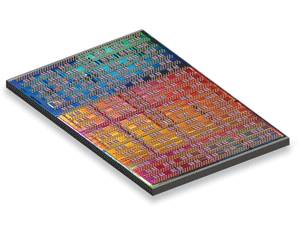Solder-bump technology breaks cooling, power-generation constraints
A potential breakthrough technology from Nextreme (Research Triangle Park, NC)—a microscale thermal and power-management device manufacturer—integrates cooling and power-generation capabilities into standard copper pillar bump processes used in high-volume electronic packaging. While copper pillar bumps are typically used as a mechanical or electrical interface, this new technology gives them a new spin, addressing heat and power issues in high-end, flip-chipped devices where higher densities, more features, higher speeds, and miniaturization are contributing to more heat and higher power densities.

Technology addresses thermal and power-management constraints to enable new functionality in flip-chip applications.
In essence, when electrical current is passed through Nextreme’s thermal bump, one side cools rapidly relative to the other. Alternatively, when heat passes through the thermal bump, the bump actually generates power.
Cooling and power-generation functionality is accomplished by incorporating a thin film of proprietary nanomaterial during the solder-bumping process. “While the innovation itself is unique, it is the fact that Nextreme has developed the technology to fit into an existing, high-volume manufacturing infrastructure—namely copper pillar bumping—that makes the breakthrough truly relevant,” said Nextreme CEO Jesko von Windheim. “By minimizing the need for manufacturing changes, and focusing on developing a seamless design-in solution, Nextreme will change how thermal and power management are implemented in semiconductors in the future.”
The technology is being implemented via conventional approaches for existing customers for thermal management in lasers and sensors, to cool high-temperature electronics, and to trickle-charge miniature batteries. In the future, customers will be able to use standard electronic design tools to integrate Nextreme’s thermal bump using the integrated circuit design process. In this way, customers will be able to place cooling or energy harvesting functionality exactly where it is needed on the electronic chip in the same manner that capacitors, resistors, transistors, and electrical interconnects are designed into electronics today.
Manufacturing of discrete thermal management devices from Nextreme will be supported with production at the Company’s U.S. facility in North Carolina; die-level integration will largely be outsourced offshore; and wafer-level processing will be licensed to merchant and captive providers of wafer-level flip chip processes. For more information on Nextreme’s thermal copper pillar bumping process, visit http://www.nextreme.com/bump.
Ralph Raiola
Advertisement
Learn more about Nextreme





